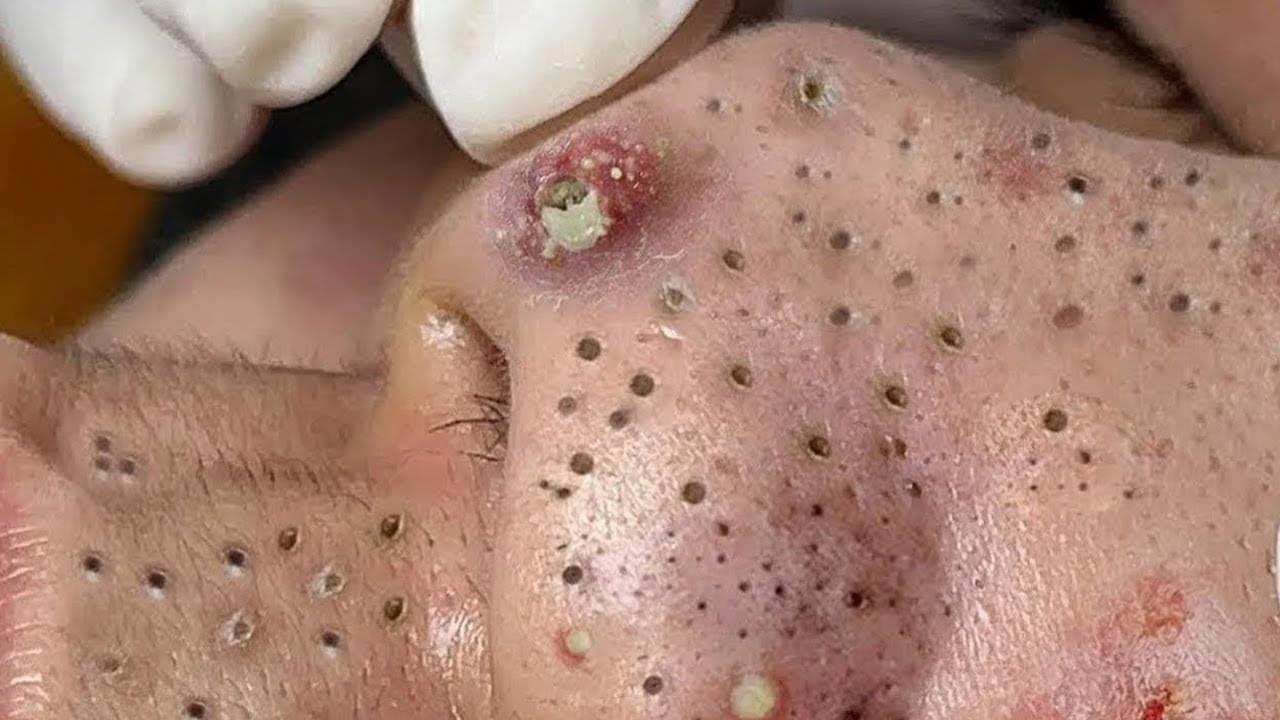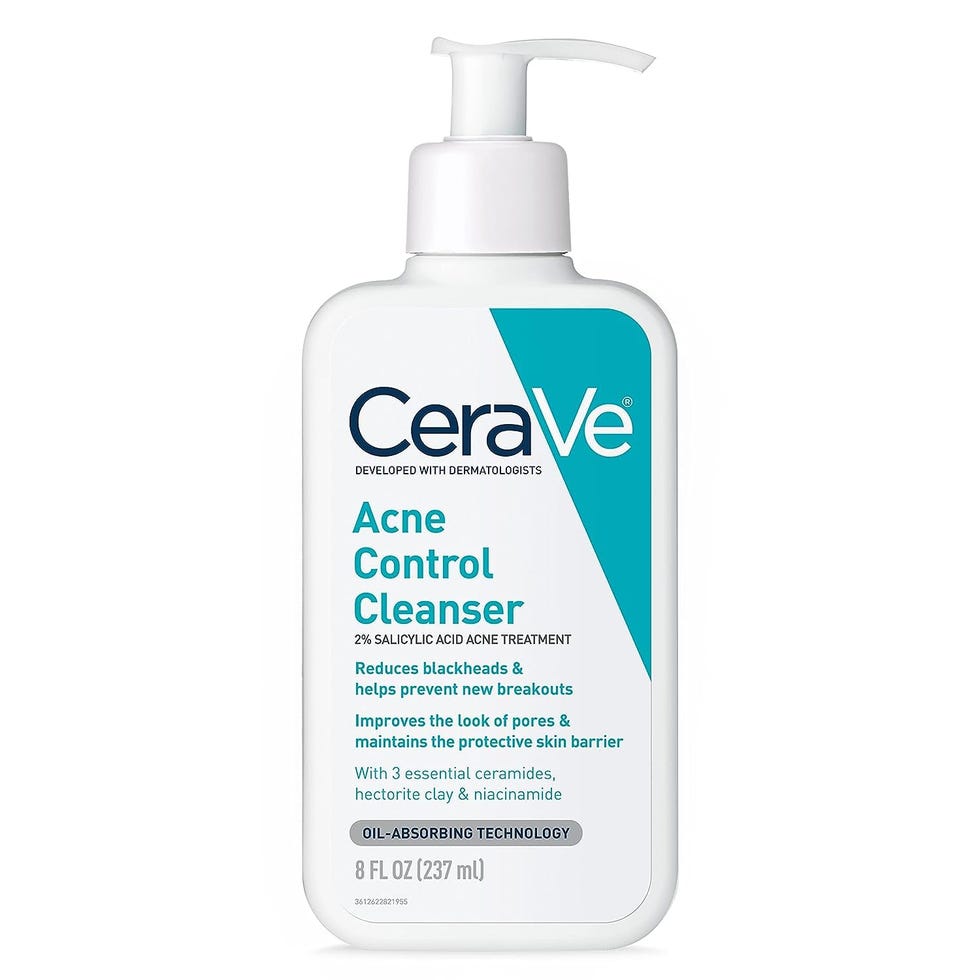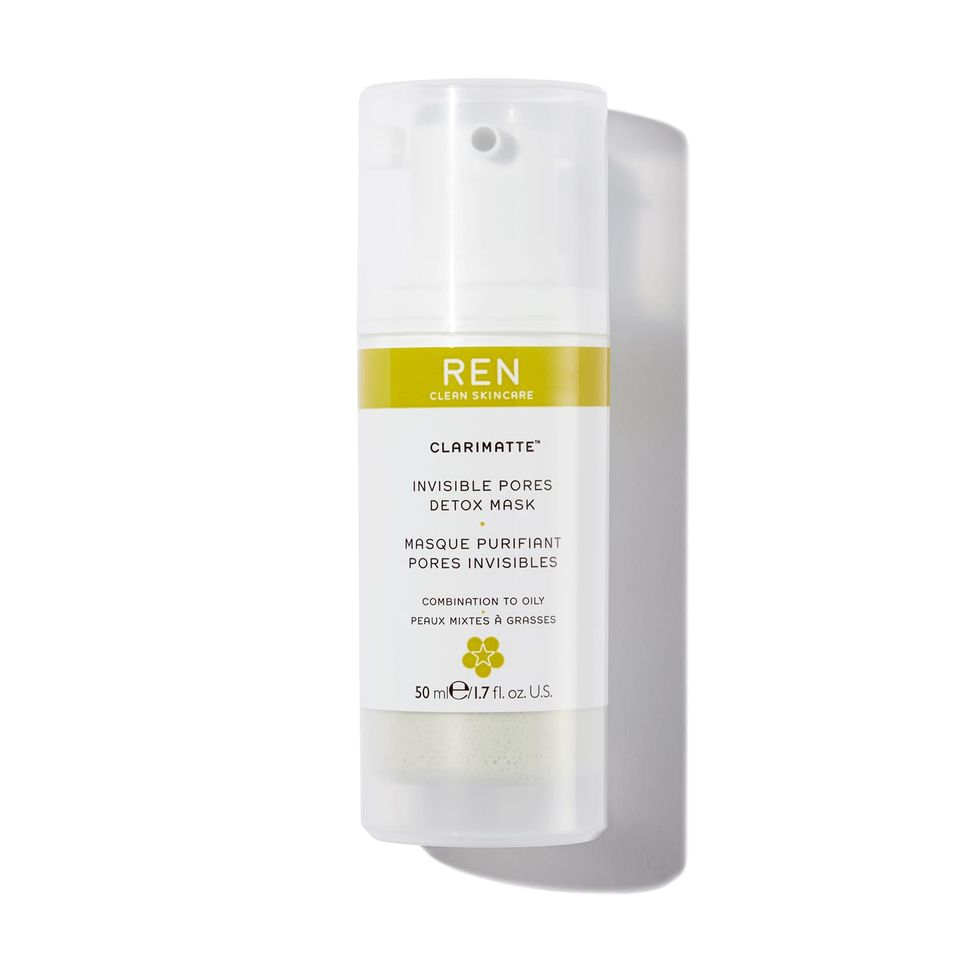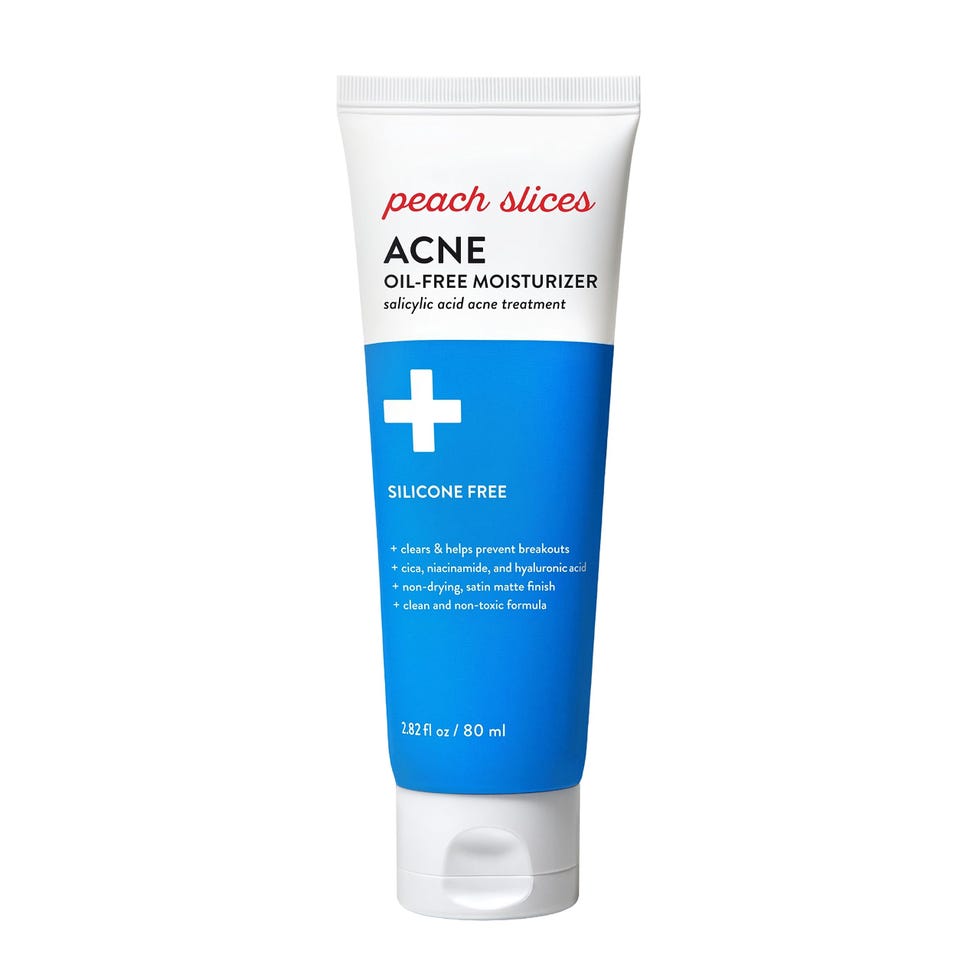
Behold: The Best Skincare Routine for Acne in 2024, According to Dermatologists
I’ve dealt with hormonal acne on and off since I was 11 years old, and the single most effective thing I’ve done over the years to help keep my breakouts in check is following a skincare routine with products specifically designed to treat and prevent acne. Sure, cleanser, moisturizer, and sunscreen are the hero steps in every skincare routine, but if you’ve got zits, incorporating acne treatments and ingredients like salicylic acid, retinoids, and benzoyl peroxide are pretty much essential for clearing your skin.
And to take it even further, “Your skincare routine should be adjusted based on the type of acne you have,” says dermatologist Margarita Lolis, MD. But that doesn’t mean you need a 10-step routine (lookin’ at you, TikTok). “Using too many active ingredients at once—like layering multiple treatments with AHAs, retinoids, and benzoyl peroxide—can be too harsh and irritate your skin, which can end up making breakouts worse,” Dr. Lolis adds. “It’s often best to keep it simple: a gentle cleanser, a treatment product, and a noncomedogenic moisturizer, along with sunscreen during the day.”
Need some more info to start though? I gotchu. I tapped Dr. Lolis on her go-to acne skincare routines for patients plus compiled my favorite tips and ingredients I’ve learned over the last decade and a half of my life dealing with zits. Keep reading for all of my findings:
Jump to:
- What causes acne?
- What is the best routine to get rid of acne?
- When to see a dermatologist for acne?
- What can a dermatologist do for acne?
- Do acne devices work?
- Final thoughts:
- Meet the experts:
- Why trust Cosmopolitan?
What causes acne?
Acne is caused when your pores get clogged with acne-causing bacteria, dead skin, and excess oil (which is triggered by hormone fluctuations). “Fundamentally, everyone’s skin is the same—everyone has hormonal fluctuations, oil productions, and acne-causing bacteria in their skin that could cause a huge breakout at any time,” dermatologist Mona Gohara, MD, previously told Cosmo. But some people’s oil glands are more sensitive to those triggers, simply based on their genetics, causing more frequent inflammation and breakouts, Dr. Gohara added.
What is the best routine to get rid of acne?
If you have acne, your skincare routine should include three basic steps—cleanser, moisturizer, and SPF—but you can also include a few others to help exfoliate dead skin, kill acne-causing bacteria, and/or bring down inflammation. See below for a full dermatologist-recommended skincare routine for acne:
YOUR MORNING ROUTINE
STEP 1: Wash your face
Washing your face in the morning is actually up for debate—as in, some derms don’t think it’s a requirement. For those with dry skin who find cleansing in the morning is a lil stripping, feel free to try swiping on a toner pad or simply rinsing your face with some water before proceeding to your next step.
Now if you’ve got oily skin, you prob want to rinse all the oils off your face that accumulated while you slept before going in with the rest of your routine. However, you don’t have to use a specific acne-fighting wash, which can potentially be drying if used twice per day. Instead, stick to a gentle, sulfate-free cleanser—it’ll dissolve excess oil, dirt, and bacteria without leaving your face tight and irritated.
The best gentle cleansers for acne-prone skin:
CeraVe Face Wash Acne Treatment
Now 17% Off
Skinfix Barrier+ Ceramide + Ectoin Gentle Gel Cleanser
STEP 2: Apply an acne treatment
Now’s the time to incorporate the serums, gels, and spot treatments to help get rid of your zits. Morning is the perfect time for active ingredients like salicylic acid and benzoyl peroxide, the two gold standards for acne. Salicylic acid is a BHA (beta hydroxy acid) that dissolves the excess oil and dead skin cells that lead to clogged pores.
Benzoyl peroxide, on the other hand, helps kill acne-causing bacteria on your skin and in your pores to help reduce pore clogging and inflammation. Opt for a 2.5 or 5 percent formula if your skin is sensitive (10 percent tends to be v drying but can be great for a very-oily skin type). And if you find it still a bit too irritating, choose a spot treatment that’ll target your acne-prone areas without drying out the rest of your skin.
Acne treatments we <3:
Salicylic Acid Toner
Hero Cosmetics Pore Release Blackhead Clearing Solution
Salicylic Acid Serum
The Ordinary Salicylic Acid 2% Anhydrous Solution Pore Clearing Serum
Clarifying Serum
Zo Skin Health Complexion Clarifying Serum
Benzoyl Peroxide Spot Treatment
Paula’s Choice Clear Extra Strength Daily Skin Clearing Treatment
STEP 3: Moisturize
“Moisturizer is absolutely necessary to balance your skin’s oil production and keep your skin barrier healthy,” says Dr. Lolis. Yup, this is still true even if your skin is oily AF. To keep your skin hydrated, focus on moisturizers and gel creams that use lightweight hydrators—like hyaluronic acid, glycerin, and squalane—and avoid thick creams that are filled with heavy oils and butters like shea butter and coconut oil. Some of our faves:
The best moisturizers for acne-prone skin:
Ren Clean Skincare Clarimatte T-Zone Balancing Gel Cream
Peach Slices Acne Oil-Free Moisturizer
STEP 4: Protect with SPF
And of course, no matter your skin concerns or type, you need to protect your skin from the sun with sunscreen every single day, says Dr. Lolis (and the other 8 million derms I’ve interviewed in my beauty editor career). FYI: UV exposure from the sun can actually make active acne and acne scarring worse, as well as potentially lead to both premature aging and skin cancer. Make sure the formula you use (1) contains SPF 30 or more, which is the daily minimum recommended by dermatologists; and (2) provides broad-spectrum protection against both UVA rays (the damage-causing kind) and UVB rays (the cancer-causing kind).
For some oily skin people (it me), you might not like the feeling of both a moisturizer and SPF. In that case, opt for a moisturizing sunscreen, like the ones listed below.
Sunscreens for acne-prone skin, right this way:
Matte
Starface World Clear As Day SPF 46 Invisible Sunscreen Gel
Matte
Colorescience Total Protection Face Shield Matte SPF 50
Moisturizing
Supergoop! Triple Prep Weightless Multitasking Moisturizer SPF 40 Face Sunscreen
Moisturizing
EltaMD UV Daily Facial Sunscreen SPF 40
YOUR NIGHTTIME ROUTINE
STEP 1: Wash your face and remove makeup
“For topical ingredients to absorb properly, you need clean skin that’s totally free of oil and grime,” Dr. Gohara once said. Meaning you’ve gotta start your routine with a clean face, no matter how tired you are before bed. No, a sad little face wipe doesn’t cut it (in fact, using one actually lead to more breakouts on acne-prone skin). Use the same cleanser you used in the morning to remove all the gunk that accumulated on your skin during the day.
Side note: If you’re a makeup wearer, I highly suggest double cleansing—which is when you first use an oil-based cleanser or cleansing balm to break down your foundation and eye makeup (so long as the oils are noncomedogenic, they shouldn’t clog your pores, but try a patch test first to be sure) and then use your gentle cleanser to rinse everything away. It’s way more effective at cleaning your pores and dissolving heavy makeup than a face wash alone.
Take off your makeup with one of these, pls:
The Inkey List Oat Cleansing Balm
First Aid Beauty 2-in-1 Cleansing Oil + Makeup Remover
Now 25% Off
STEP 2: Apply an acne treatment
The best acne treatment at night is a retinoid for acne, according to Dr. Gohara, especially if you’ve got cystic acne. “Retinoids speed up and regulate the shedding within your oil glands, kind of like a crossing guard that keeps things moving,” Dr. Gohara has said. “Without it, the glands get lazy, they don’t shed, they get plugged, and the bacteria starts feeding on the plug to create a zit. But if you keep the shedding regulated, the bacteria doesn’t really have anything to feed off of.”
Dermatologists often prescribe tretinoin, the strongest form of retinol. It’s basically the gold standard of acne treatments if your skin can tolerate it. If not, though, try adapalene, an over-the-counter retinoid that’s strong enough to smooth skin texture and reduce breakouts without the harshness of tret. Just make sure to start small: Smooth a pea-sized drop across your entire face once a week for the first week, then twice a week for two weeks before working up to three times a week indefinitely. And always, always, always follow up with a moisturizer.
The best acne treatments
Adapalene
Differin Acne Treatment Gel
Tretinoin
Ro Custom Rx Treatment
But if you still can’t tolerate retinoids, try incorporating your morning acne treatment at night instead. In general, if you’re dealing with blackheads or whiteheads, go with adapalene or salicylic acid, and if you’re dealing with inflammatory acne, like pustules, try benzoyl peroxide or niacinamide, which can help reduce inflammation and discoloration while balancing oil production. Salicylic acid, benzoyl peroxide, and niacinamide can usually be used daily (and, on non-sensitive skin, sometimes twice daily), but start out using them every other night, gradually building your tolerance to every night and/or morning.
STEP 3: Moisturize
Wait a minute or two for whatever acne treatment you’ve just applied to sink into your skin, and then layer the same moisturizer (remember, your skin needs all the hydration it can get) you used in the morning right on top. And before you ask, the answer is no, you don’t need a separate night cream. Most night creams contain active ingredients, and your skin should already be getting what it needs for acne from step 2. Plus, mixing and matching too many actives can lead to irritation—or even render your products ineffective if the ingredients don’t play well together.
FAQs:
When to see a dermatologist for acne?
“It’s always important to consult with a dermatologist before starting any new skincare routine, especially if you have persistent acne,” says Dr. Lolis. If you can’t see a dermatologist IRL, try a service like Apostrophe, Ro, or Curology, all of which offer 1:1 consultations with dermatologists online for a small fee, even if you don’t have insurance.
What can a dermatologist do for acne?
Dermatologists can help develop a personalized approach to clear your zits. If you have hormonal acne, they might recommend birth control and/or spironolactone, a blood pressure medication that is used off label to help treat cystic acne. They could also recommend prescription topicals, like antibiotics, retinoids, prescription-grade benzoyl peroxide (including Twyneo, a newish cream that combines benzoyl peroxide and tretinoin), an anti-inflammatory medication called dapsone gel, or a topical that targets hormonal acne known as clascoterone.
Along with all of the above, a dermatologist can also suggest potential in-office treatments. Aviclear is a laser treatment that helps shrink your oil glands to prevent acne flares (I’ve tried it, and it really decreased my hormonal acne). When your acne is mostly calmed down, they might intro you to laser treatments like Clear + Brilliant and Halo to smooth uneven skin texture and reduce hyperpigmentation.
Do acne devices work?
It all depends which type of acne device you try. Blue light has been shown to potentially prevent acne, since it can kill acne-causing bacteria on your skin. When you wear a blue light LED mask, the “blue light acts on different cellular targets in the skin to induce therapeutic benefits, including the improvement of acne, chronic inflammatory skin conditions, sun damage, and wound healing,” dermatologist Sara Hogan, MD, previously told _Cosmo. _Other acne light therapy devices that use red light, however, can help bring down inflammation to possibly help with acne flares, but there isn’t enough evidence there yet on how it can help improve acne. __
Final thoughts:
Not to be a buzzkill, but this routine—or any routine, for that matter—won’t transform your skin overnight. Most acne treatments take anywhere from 4 to 12 weeks of consistent use before giving you any visible results (big emphasis on consistency here—using your products here and there won’t really make a difference). But just stick with it, and if you can, head to a dermatologist for other treatment options that are targeted to your needs and acne.
Meet the experts:
- Margarita Lolis, MD, is a board-certified dermatologist at Skin Laser and Surgery Specialists in New York, NY and Hackensack, NJ, and Hillsborough, NJ.
- Mona Gohara, MD, is a board-certified dermatologist at the Dermatology Physicians of Connecticut in multiple locations in CT, as well as an associate clinical professor of dermatology at Yale School of Medicine. Dr. Gohara has also spoken to Cosmo about cystic acne.
- Sara Hogan, MD is a board-certified, fellowship-trained cosmetic dermatologist based in Washington, D.C. She is an assistant clinical professor in dermatology at The George Washington University School of Medicine and Health Sciences.
Why trust C osmopolitan?
Beth Gillette is the beauty editor at Cosmopolitan with six years of experience researching, writing, and editing skincare stories that range from vitamin C serums to butt acne. She’s an authority in all skincare categories but an expert when it comes to skincare routines for acne, considering she’s been following one since she was 11 years old to curb her breakouts. She’s also constantly interviewing dermatologists and aestheticians about acne, as well as testing products ahead of Cosmo ’s Holy Grail Acne Awards.
Lauren Balsamo is the deputy beauty director at Cosmopolitan with more than a decade of experience researching, writing, and editing skincare stories, like the best retinol eye creams to the best pore-minimizing treatments. She regularly tests and analyzes acne treatments for efficacy, while working with the industry’s top dermatologists and aestheticians to assess new formulas, brands, and technologies.
Beth Gillette is the beauty editor at Cosmopolitan , where she covers skincare, makeup, hair, nails, and more across digital and print. She can generally be found in bright eyeshadow furiously typing her latest feature or hemming and hawing about a new product you “have to try.” Prior to Cosmopolitan , she wrote and edited beauty content as an Editor at The Everygirl for four years. Follow her on Instagram for makeup selfies and a new hair ‘do every few months.
Beauty Director
Lauren Balsamo is the beauty director at Cosmopolitan where she writes, edits, and produces all types of beauty content—from product reviews to personal essays and trend reports. She has covered beauty for more than a decade at Cosmopolitan. Follow her on Instagram.
- Title: Behold: The Best Skincare Routine for Acne in 2024, According to Dermatologists
- Author: Ariya Mason
- Created at : 2025-05-06 00:00:00
- Updated at : 2025-05-16 03:58:23
- Link: https://acnehealth.site/2025/05/06/Skincare/20250506-Behold_The_Best_Skincare_Routine_for_Acne_in_2024/
- License: This work is licensed under CC BY-NC-SA 4.0.


















